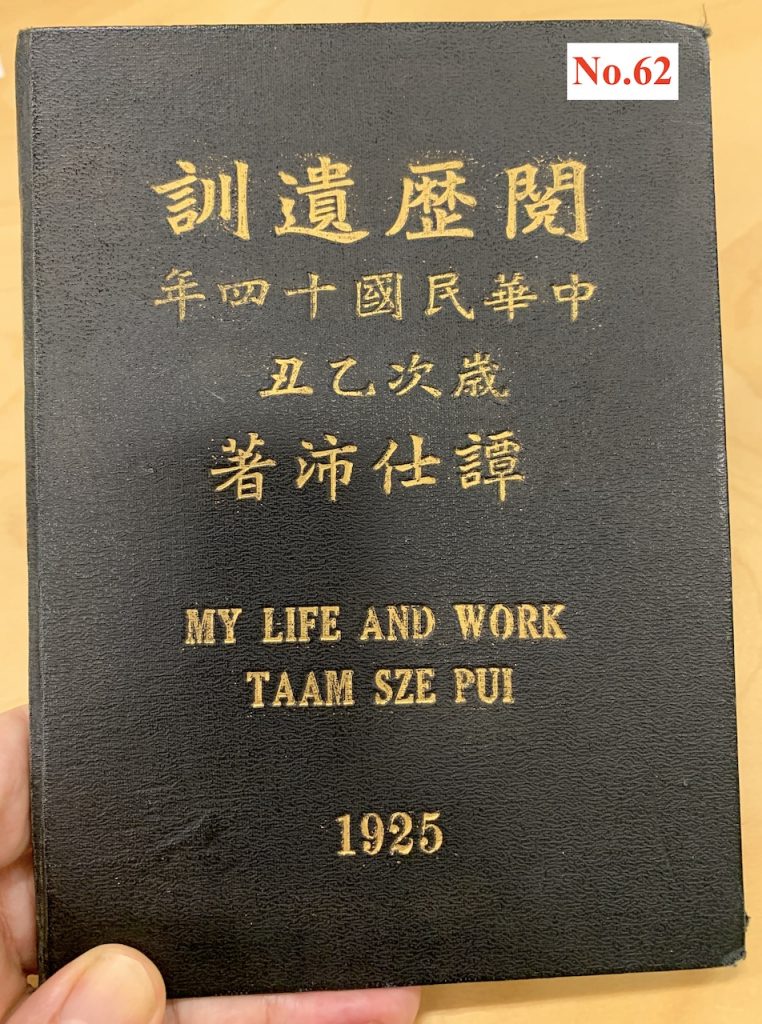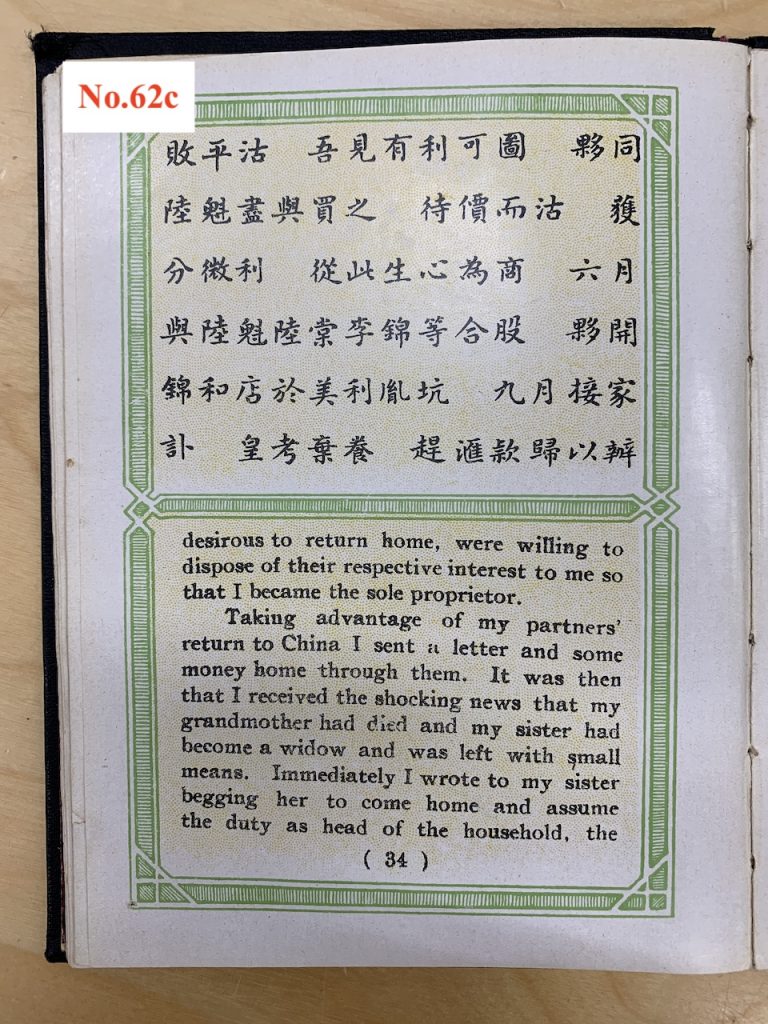
In recent times a number of Chinese Australians have written their autobiographies, notably Stanley Hunt, Francis Lee, and most recently Andrew Kwong.[1] But ahead of them all was the remarkable Taam Sze Pui who published his short but striking account of his life as early as 1925 and for good measure in a bi-lingual edition. (See No. 11) Few copies of My Life and Work now exist, though a digitalised version leaves little excuse for not being familiar with this readable, valuable and all too rare example of the voice of Chinese Australians of the late 19th and early 20th century.

Like so many, Taam Sze arrived in search of gold and he quickly informs us just what a gamble this was: “There was a rumour then that gold had been discovered in a place called Cooktown and the source of which was inexhaustible and free for all. Without verifying the truth, my father planned to go with his two sons.”[2] In less than a month: “Oh, what a disappointment when we learned that the rumour was unfounded and we were mislead!”[3] Taam Sze continues with his account of the desperate straits of the failed goldminers as they sought to earn money through vegetable gardening, domestic service – “disrespectful and the wages poor” – and restaurant work.[4]

Taam Sze and his brother did as many others and worked at scrub cutting – “saved by frugal living” – to clear the land for European farming.[5] Eventually he moved into hawking and business with partners before setting up as a sole owner.[6] Throughout his time in north Queensland Taam Sze kept in touch with his relatives in China – his father had returned home – remitting money and contributing to funerals and helping arrange family matters, including the return to China and marriage of his brother (of whose intelligence he had a low opinion).[7] By 1892 Taam Sze also had a partnership in a Hong Kong store, essential in helping transact business back to southern China.[8] (See No. 19)
Taam Sze also touches on the essential sojourner dilemma and one that brought many to return to the home village and back to Australia again and again. The money was to be earned in Australia but as the classical saying quoted by Taam Sze went: “To have amassed great wealth and not return home is comparable to walking in magnificent clothes at night.”[9] (See No. 35) Taam Sze’s solution was to remain in Australia and have a wife sent to him. This was the choice of a minority for a variety of reasons but with his parents already dead the main impediment to this path did not exist in his case.[10] Thus a family was established in Innisfail and with children born the family business flourished. Money, however, continued to be sent to China, property purchased and the children sent on a visit at least once.[11] In addition, Taam Sze helped others to arrive in Australia and to find work, an essential element of the chain migration that was such a major element of the continuing link between Australia and southern China.[12]
Taam Sze Pui’s My Life and Work in its lovely bi-lingual edition provides in a remarkably concise manner all the elements of family, village links, poverty, remittances, business and hard work that are the core elements of Chinese Australian history in this period.
For a rare use of this source see:
Sophie Loy-Wilson, A Chinese shopkeeper on the Atherton Tablelands: Tracing connections between regional Queensland and regional China in Taam Szu Pui’s My life and work. Queensland Review, 21(2), 2014, pp.160-176.
[1] Stanley Hunt, From Shekki to Sydney: an autobiography (Broadway, N.S.W.: Wild Peony, 2009); Francis Lee, Out of bounds: journey of a migrant (Petersham North, N.S.W.: Universe Books, 2010) and Andrew Kwong, One Bright Moon (HarperCollins AU, 2020).
[2] Taam Sze Pui, My life and work, n.p. 1925, p.9.
[3] Taam Sze Pui, My life and work, n.p. 1925, p.10.
[4] Taam Sze Pui, My life and work, n.p. 1925, pp.22-26.
[5] Taam Sze Pui, My life and work, n.p. 1925, pp.27-29.
[6] Taam Sze Pui, My life and work, n.p. 1925, pp.31-34.
[7] Taam Sze Pui, My life and work, n.p. 1925, pp.32-34, p.37.
[8] Taam Sze Pui, My life and work, n.p. 1925, p.37.
[9] Taam Sze Pui, My life and work, n.p. 1925, p.38.
[10] Taam Sze Pui, My life and work, n.p. 1925, pp.39-40.
[11] Taam Sze Pui, My life and work, n.p. 1925, pp.41-43.
[12] Taam Sze Pui, My life and work, n.p. 1925, pp.43-45.

